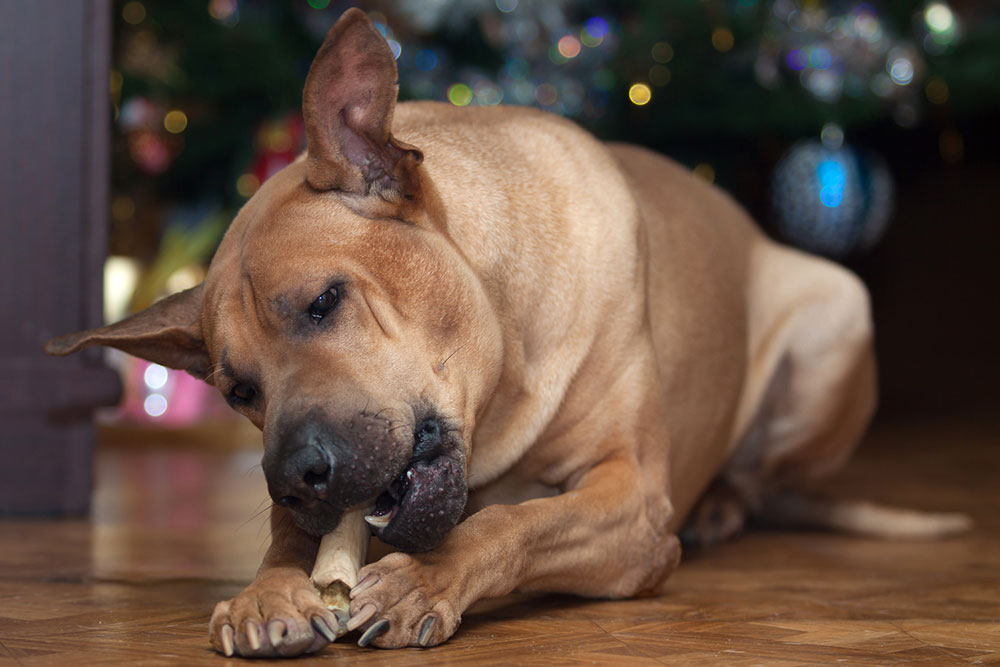5 reasons why bully sticks are unsafe for dogs

Bully sticks, or pizzle sticks, are popular dog treats. They are commonly made from bull pizzles and are considered to be natural and delicious. As more pet owners have begun to seek out natural pet food options, the use of animal byproducts as treats has increased. Bully sticks are often touted for their health benefits, but recent studies have stated otherwise. Research shows bully sticks have high calorific value and may contain harmful contaminants.
Digestive trouble
Pet parents should carefully consider the risks before giving their pets bully sticks, as they may be contaminated during the manufacturing process. The treats are minimally processed, which makes them more susceptible to bacterial contamination. This can result in infections with Escherichia coli or Salmonella, causing digestive trouble for pets who chew on the treats. The drying process used during the production or manufacturing of these treats is insufficient to get rid of the contaminants, which poses a serious health risk for pets and their owners. The intake of such contaminated bully sticks can lead to food-borne illnesses, causing symptoms such as diarrhea, vomiting, and lethargy in pets. In humans, the symptoms can be more severe, leading to potential complications.
Choking hazard
Bully sticks are among the most preferred durable treats for pets. The tough and chewy texture makes them highly appealing to most pets. However, these treats can pose a choking hazard due to their dense texture, especially for smaller dogs or dogs accustomed to chewing on bigger pieces of food. If the pet chokes on the bully stick, it can block their airway or get stuck in the food pipe, making it difficult to swallow. This can leave the pet in a life-threatening situation, so it’s important for pet parents to supervise their pets while giving them these treats. They should also remove any broken pieces and keep them away from their pets. By taking these precautions, pet owners can ensure their pets can enjoy the treats safely.
Nutritional concerns
Bully sticks should not be considered a proper meal for pets, but they can be incorporated as snacks to help meet their nutritional needs. However, snacks have a high protein content, which can be beneficial for pets. That said, it is important to note that bully sticks are also high in calories. Overfeeding or frequent use of these treats may increase the pet’s body mass and cause an imbalance in the pet’s nutrition. In addition, some bully sticks may contain preservatives or additives that can prove harmful to pets with certain health concerns. Pet parents should carefully consider and evaluate the nutritional content of bully sticks before introducing them to the pet’s daily meal routine. They should be used in moderation and not as a regular part of the pet’s regime.
Allergic reaction
It is important to watch out for the risk of infections when treating pets. There is a possibility of pets being allergic to certain contents of bully sticks. Some dogs might not react positively to certain proteins in the treats, which can cause redness, itching, and gastrointestinal issues. Beef proteins are one of the common allergens that are a popular ingredient in bully sticks. It can easily cause an allergic reaction in dogs with sensitive digestion. Pet parents should be vigilant and carefully observe any signs of allergic reaction when giving their pets bully sticks for the first time. It is important to maintain the same level of vigilance if the treats are from a different brand than usual or have any changes in their contents.
Risk of dental damage
Bully sticks are often considered a safe and beneficial treat for pets, and they’re a great addition to the pet’s healthy dental regimen. Chewing tough treats can help scrape away plaque buildup and reduce tartar accumulation on the surface of the teeth in pets. However, it is important to note that the hardness of the bully sticks can also be a contributing factor to gum damage and broken teeth. Bully sticks can exert excessive force on the teeth and gums, especially in aggressive chewers or dogs with pre-existing dental problems. Additionally, the high protein content of bully sticks can lead to increased plaque formation, which can counteract any potential benefits for dental health.



